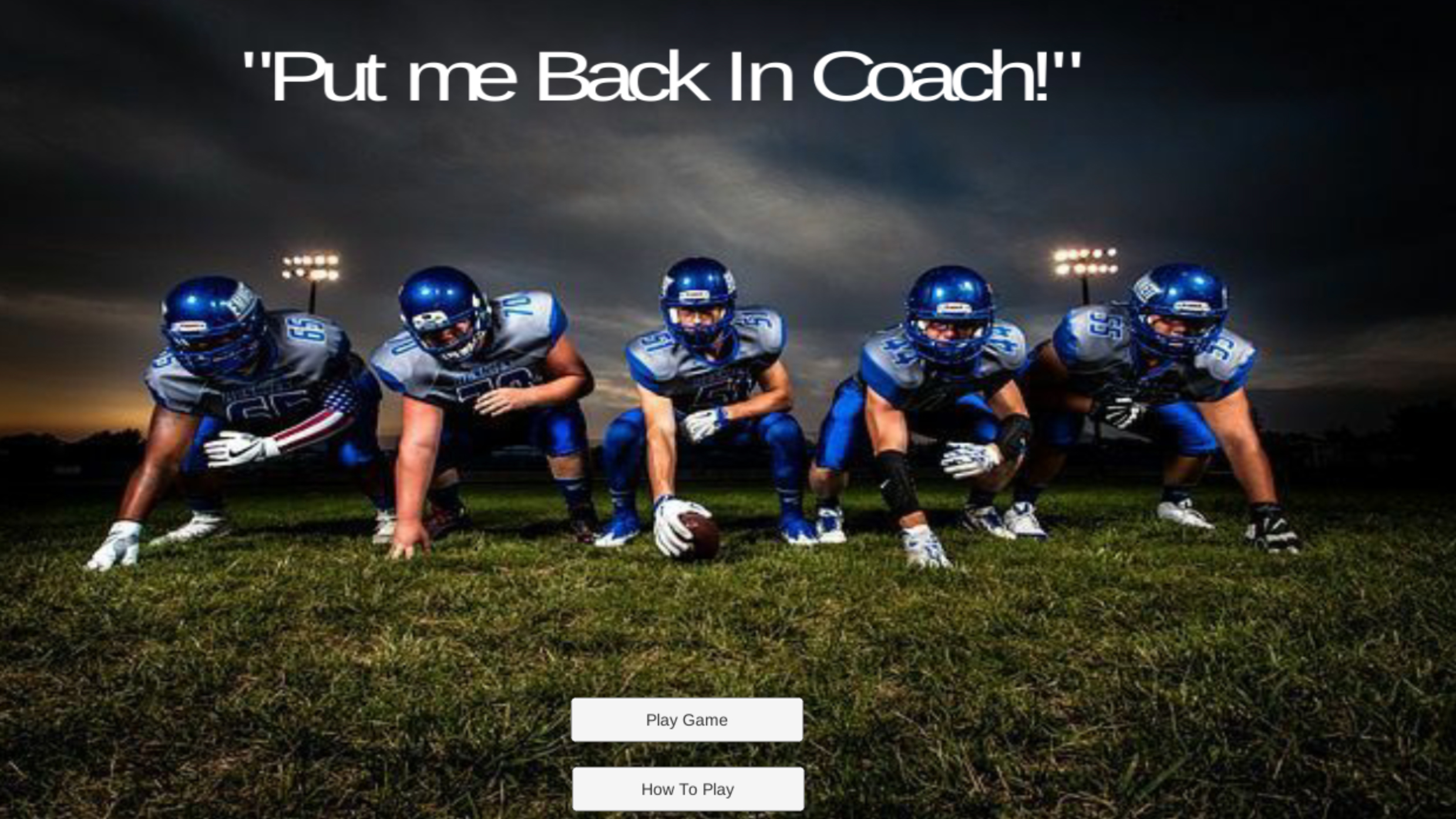"Put Me Back in Coach" showcases injury decisions for high school football coaches

New studies into the threat concussions present to athletes keep the medical issue front and center.
Students in the New Media Innovation Lab at Arizona State University’s Cronkite School of Journalism took a unique approach to concussion awareness. By the end of the course, three students – Noah Weinberg, Brendan Walker and Melody Pierce – had developed “Put Me Back in Coach!” a game that helps draw attention to how difficult it can be to diagnose any injury, in real time, with minimal medical training.
The game takes place from the first-person perspective of a football coach on a high school sideline. After each play, two of his players drop to the ground with different injuries. It’s up to the coach/game player to walk up to each of the injured high-schoolers, read a pop-up excerpt about their injury and make a decision about whether or not they will stay in the game. Decisions need to be made in 10 seconds, to further emulate real-life scenarios.
“We did research into training required for coaches, the type of injuries that occur with high school students and the symptoms that they’ll feel,” Weinberg said. “There was a number of different articles and different journals that we looked at – we looked at symptoms and we looked at concussions, what causes concussions.”
The group had between four and five weeks to finish the project, according to Weinberg, as well as some extra time following the assignment to make small tweaks where they were needed.
One of the biggest hurdles in designing the game, according to Retha Hill, executive director of the Digital Innovation and Entrepreneurship Lab, was the technical aspect of the whole process, particular the coding element.
“The students are journalism or PR, so they had to learn how to code and work in Unity to create a viable game,” Hill said. “Everything from animating the characters so they move naturally; creating the scoring and creating the targets so the player can trigger an event such as the pop-up question.”
“That is difficult for new game developers and coders.”
Weinberg said that he and the group initially looked into designing a board game, which would’ve included negative actions, such as moving back a space, for wrong answers.
He and the group decided the concept was too simplistic and went in a more complex direction.
“In this class, we worked primarily with C#, which is a different coding language,” Weinberg said. “The program we used to make the game itself is called Unity, it can take in a ton of different coding languages.”
The coding on the project was headed by Weinberg and Pierce, while Walker worked on the design of the game.
“We have a list of question we can ask (the user), and each of those questions has an outcome attached to it,” Weinberg said. “I had to make it so that list is accessed when you as a user run up to that player.”
The timing of the questions is perfectly random throughout the game. While there is a finite amount of selections, they won’t ever be in the same sequence, thus creating a unique experience on each individual play through.
In terms of the game’s public reach, the group had aspirations at the start of the project to eventually get the finished product in the hands of any high school coaches and players who were willing to play.
However, that goal stalled slightly during the development process.
“From my perspective, at least, (the development) was complex, but (the game) was also really basic,” Weinberg said. “I would’ve liked to do more things to it had I had more time to spend on the project.”
The game is currently live, with a link to play in the story above. While there are currently no plans to market the game, it will be made available via the New Media Innovation Lab web page.

